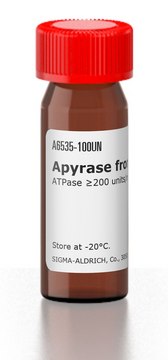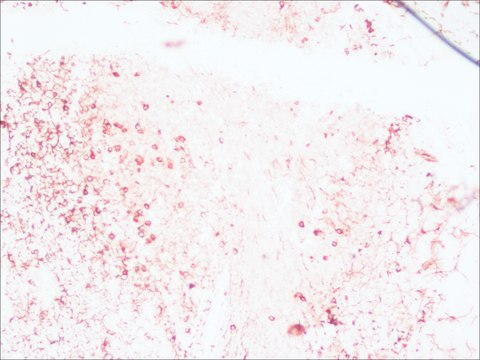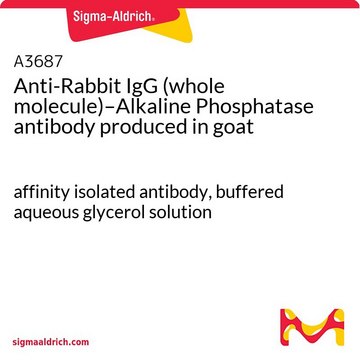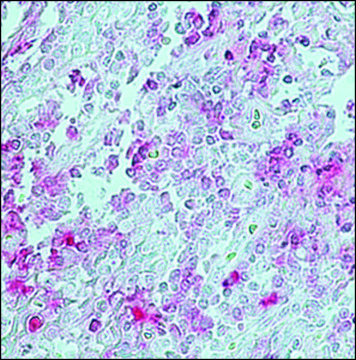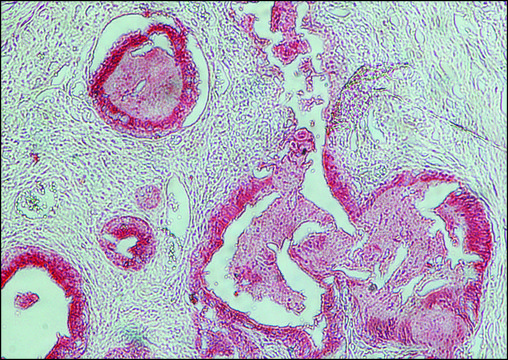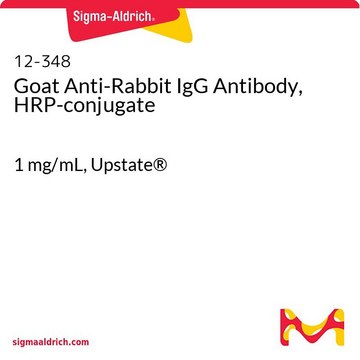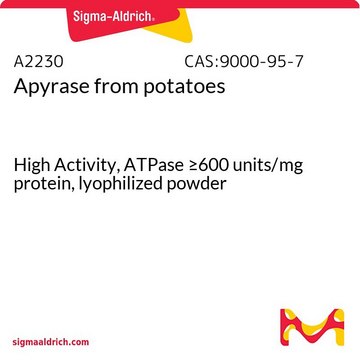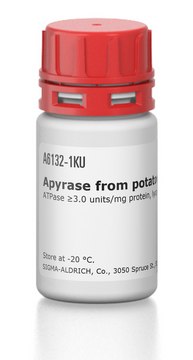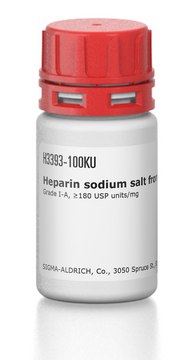A2306
Monoclonal Anti-Rabbit Immunoglobulins−Alkaline Phosphatase antibody produced in mouse
clone RG-16, purified immunoglobulin, buffered aqueous glycerol solution
Synonym(s):
Monoclonal Anti-Rabbit Immunoglobulins (IgG, IgA, IgM)
About This Item
Recommended Products
biological source
mouse
Quality Level
conjugate
alkaline phosphatase conjugate
antibody form
purified immunoglobulin
antibody product type
secondary antibodies
clone
RG-16, monoclonal
form
buffered aqueous glycerol solution
species reactivity
rabbit
should not react with
pig, chicken, bovine, horse, human, guinea pig, turkey, rat, canine, goat, feline, sheep
technique(s)
direct ELISA: 1:40,000
immunohistochemistry (formalin-fixed, paraffin-embedded sections): 1:160 using human tonsil and Cat. No. I8635 as the primary antibody
western blot: 1:160,000-1:320,000 using detecting β-actin in total cell extract of HeLa cells (5-10 μg per well)
isotype
IgG1
shipped in
wet ice
storage temp.
2-8°C
target post-translational modification
unmodified
Looking for similar products? Visit Product Comparison Guide
General description
Specificity
Application
- indirect enzyme linked immunosorbent assay (ELISA)
- immunoblotting
- immunohistochemistry
Biochem/physiol Actions
Mouse monoclonal anti-rabbit immunoglobulins-alkaline phosphatase antibody binds to an epitope on the heavy chain of rabbit IgG, IgA, and IgM. The product stains bands at the intact whole molecule and at the heavy chains in an immunoblot of denatured, non-reduced rabbit immunoglobulins. Reduction of rabbit immunoglobulins destroys the epitope. In ELISA, the product shows no cross reaction with human serum or tissue preparations, nor with human IgA, IgG, or IgM.
Physical form
Disclaimer
Not finding the right product?
Try our Product Selector Tool.
Storage Class Code
10 - Combustible liquids
WGK
WGK 3
Flash Point(F)
Not applicable
Flash Point(C)
Not applicable
Personal Protective Equipment
Regulatory Information
Choose from one of the most recent versions:
Certificates of Analysis (COA)
Don't see the Right Version?
If you require a particular version, you can look up a specific certificate by the Lot or Batch number.
Already Own This Product?
Find documentation for the products that you have recently purchased in the Document Library.
Our team of scientists has experience in all areas of research including Life Science, Material Science, Chemical Synthesis, Chromatography, Analytical and many others.
Contact Technical Service